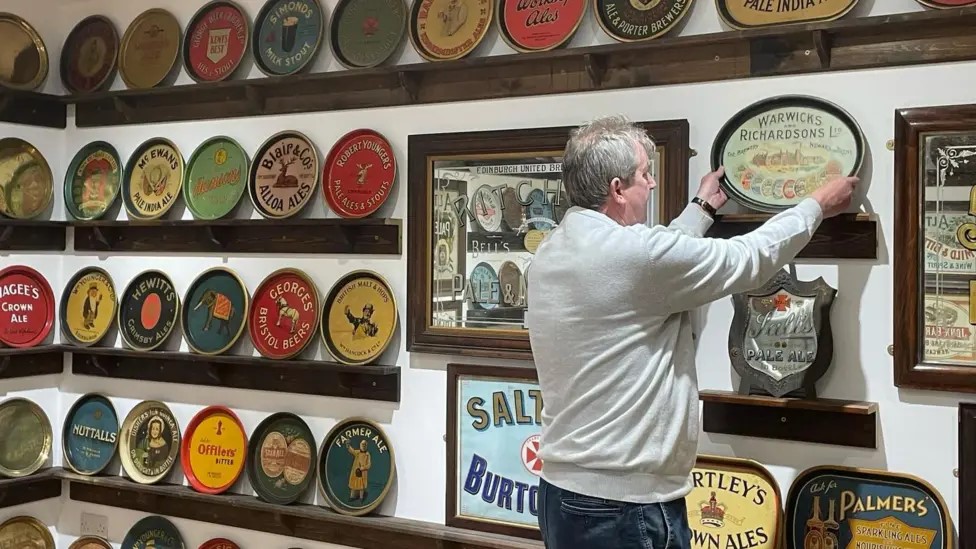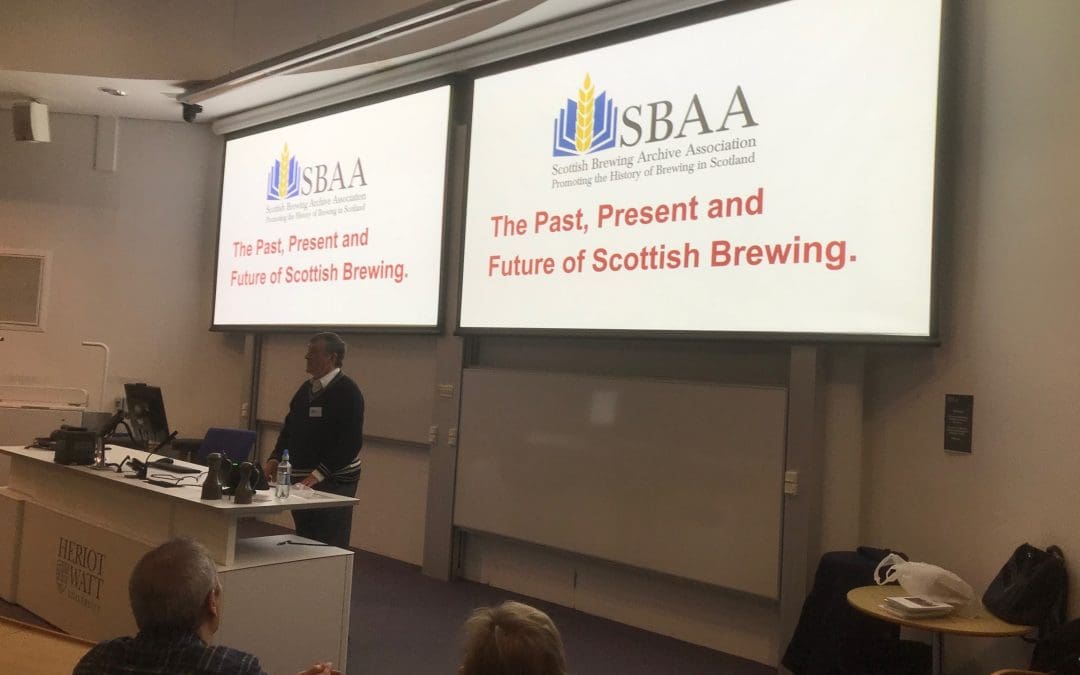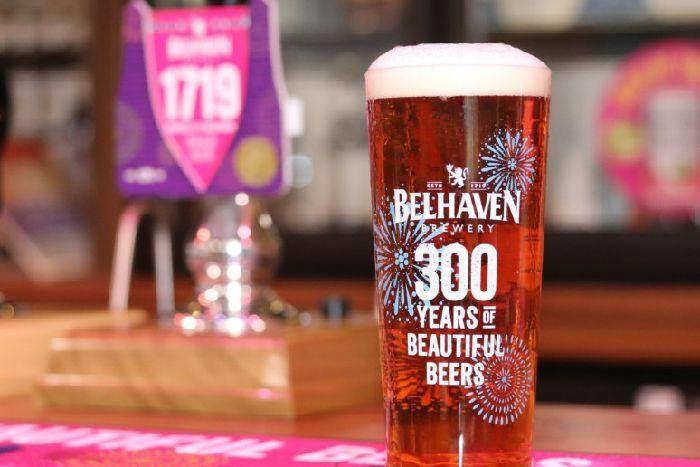
Planned visit to Belhaven Brewery
In our first newsletter of 2019 there was a short article that highlighted the fact that Belhaven Brewery is celebrating its 300th anniversary this year.
It would be fitting for the SBAA to support Belhaven by arranging a visit to see the new visitors centre.
As a result a visit on Thursday the 8th August at 2:00pm to Belhaven Brewery has been arranged.
If you wish to attend please contact John Martin by the 25th July.
0131 441 7718
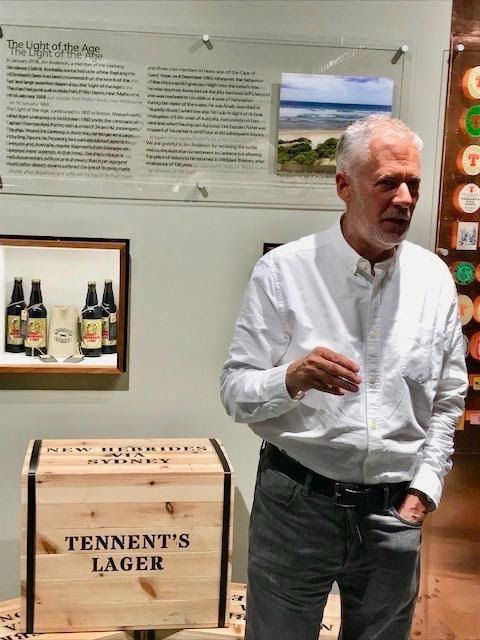

A trip to the Tennent’s Story
At the last AGM, the announcement was made that J. & R. Tennent had recently opened a visitor centre, “The Tennent’s Story” with a historical content at their Wellpark Brewery in Glasgow. Immediate interest was expressed in a group visit by the SBAA, and this duly took place on 5th June, with a dozen members in attendance. In the old days, the centre would doubtless have been called a museum, but that term seems to be rather out of favour nowadays (too ‘old hat’, perhaps?), so instead we enjoyed an ‘Experience’. An interesting atmosphere is created immediately by the initial displays being set against a backdrop of an enlarged map of 1882 showing the Brewery at its height. The whole mural map has been given a ruby-red tint, which is both pleasing and meaningful, recalling the days when a cellar-man would check the readiness of a stout by holding a lighted candle behind a sample in a glass, to see if it had attained the desired ruby-red colour.
We had the benefit of a guided tour from former employee Ivor Reid, who summarised the content of the exhibition. His wide range of knowledge gave us a good insight into the Tennent’s Story, and he was also ready to answer questions. At the end, we enjoyed a complementary drink in the upstairs bar, where further exhibits were on display. Lunch was just down the road in the near by Drygate Brewery, the food being of excellent quality for those who were adventurous, though less so for those who chose old favourites, by all accounts. A range of beers were available, perhaps the most interesting being the ‘Orinoco’, not served by the pint but in either one-third or two-thirds glasses, though the odd pint glass was observed.
Although that ended the formal part of the day, several of the group returned to indulge themselves in the souvenir shop, which had the usual range of tee-shirts, sweat-shirts, fridge magnets, and the like. Top of the shopping list, however, was the product itself. Tennent’s is world famous for its lager, of course, but the range of beers available was really quite extensive. The regular lager (the only one which came in 500 ml bottles), at 4% ABV, was more than doubled by the Extra at 9% (in 330 ml bottles, like all the rest, a size which is growing rapidly in popularity these days). The IPA was surprisingly strong at 6.2%; conversely, the Stout was a mere 4.7%. Joint top for strength was the Scotch Ale at 9%, while perhaps the pick of the bunch was Whisky-Infused Oak-Aged Beer at a comfortable 6%.
Interestingly, the big lager bottle cited “Estd. 1885” on its label, which many folk might take to be Tennent’s start-date, while all the other types were in bottles with the moulded date 1556, a whole 329 years earlier. The reason for the latter date is explained in a nearby information panel; it was when Robert Tennent probably established the Drygate Brewery at Wellpark, or at least when his name first appears in the records of the Incorporation of Maltmen in Glasgow as having done so. On the other hand, 1885 marked the introduction of its best-known product – Tennent’s Lager. The point is made on all of the crimped metal caps on the 330 bottles, which show a snarling lion with flowing mane surrounded by the words “Wellpark Brewery Scotland / Since 1556”. Oddly, the name Tennent does not appear on the cap or the body, only on the label.
The exhibition provides a good blend of show-case displays and information panels, with several audio-visual presentations, the latter having ‘hot spots’ where the sound is concentrated, in an attempt to reduce noise spillage, a problem which tends to bedevil such devices. The panels cover a range of weel-kent historical figures, which have a connection to the subject, including St Mungo, Bonnie Prince Charlie, Robert Burns, and even Buffalo Bill!
Old Hugh Tennent, who was in charge from 1827 to 1855 and created the business model for the firm’s huge expansion, although it was his grandson also named Hugh Tennent who was responsible for the introduction of Tennent’s Lager.
A spectacular display is the Bottle Wall ~ a mass of 833 empty glass bottles, which is the number that can be filled in the Brewery’s bottling line in just one minute. (Canning moves even faster, at a staggering 2,000 per minute!) There are panels crammed full of labels for a variety of Tennent’s beers produced over many decades, though without accompanying information. Look out for a little cracker: a Scotch Ale label printed in green showing a charming scene of a Highland couple in a forest clearing. Eight items of stoneware are on display; they have a special relevance, as the company took over the Possil Pottery in 1923, running it until its closure in 1942. Production was not limited to beer bottles ~ they also made bar counter items such as mugs, jugs, and ashtrays, all bearing Tennent’s name. This aspect, which is scarcely mentioned, merits a panel to itself.
A most evocative item is a glass bottle recovered from a ship-wreck which occurred in 1868, when the Light of the Age went down off the coast of Australia. Her cargo included a consignment of Tennent’s beer, and to commemorate the opening of ‘The Tennent’s Story’ in 2018, a limited edition of Shipwreck Stout (6.5% ABV) was produced. It consisted of precisely 1,868 bottles, the brew being inspired by recipes of that time, which were designed to create a product capable of withstanding not just the long sea journey, but also the climatic effects of changing hemispheres. In discussion with me, the helpful Centre manager, Ross Pollock, pointed out that Tennent’s were the biggest exporters of bottled beers in the world at that time. This and other stories of beer heritage made for a most rewarding day.
Why not visit the Tennents Story to see for yourself and discover more of Scotlands brewing heritage and the important part that Tennents played.
Graeme Cruickshank
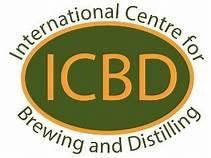
ICBD 30th Anniversary
Congratulations to the International Centre for Brewing and Distilling (ICBD) at Heriot Watt University of their 30th anniversary.
But how did all begin for the ICBD.
In 1988 Geoff Palmer the Brewing Professor at Heriot Watt spoke to Ronnie Martin, the production director of United Distillers and was also the chairman of the Scotch Whisky Association (SWA). During their conversation, Geoff Palmer explained the difficulties the Brewing & Distilling department were having regarding the future plans at Heriot Watt. As a result of the discussions Ronnie Martin gave his support and convinced the SWA that teaching and research in brewing and distilling were valuable Scottish assets and must be saved and developed. As a result the SWA made a £1m donation and further donations were made from the brewing industry.
In 1989 the ICBD was formed and has grown from strength to strength since then. Also in 1989 the brewing section of Heriot Watt moved to the new Riccarton Campus. From these early days the ICBD has flourished by working with students and industry from all around the globe in pursuit of knowledge for the benefit of society and the world.
Happy Birthday.
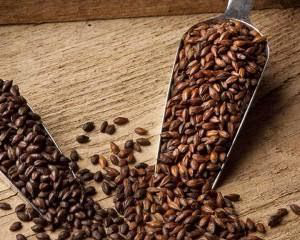
A journey to the dark side
Les Hutcheon has forwarded an extract from an article that appeared in a recent IBD magazine that reminded him of his days as a maltster when working for Scottish & Newcastle. The extract briefly explains the procedure in producing roasted barley.
Roasted barley (which in the UK is regarded as ‘special malt’) takes around 2.5 hours to make. The roasting temperature is raised over the first two hours from 80 degrees C to 180 degrees and then increased to 230 degrees C when the grain is approaching combustibility. Additions of spray water during the process helps control temperatures.
Colour develops rapidly and inspection samples must be taken regularly. Once the burners are turned off the load is again quenched with sprays of water (anywhere between 45-200 litres per tonne). The highly coloured chocolate and black malts (with no enzymic activity) are made in a similar manner except that they originate from malt, rather than barley.
For chocolate malt temperature is raised to around 215 degrees C and for black malt 220-225 degrees C is the finishing temperature.
After reading the extract it reminded me of an earlier article that Les wrote himself and appeared in the Journal 2014 and titled – In hell they’ll roast ye like a herrin.
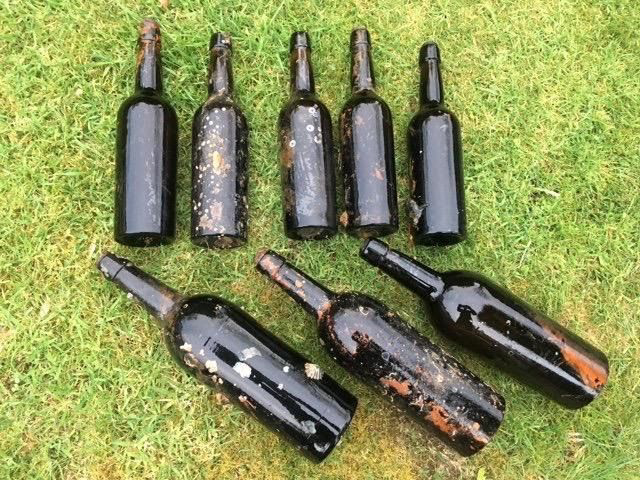
The Wallachia
The SBAA was contacted recently by Andy Heslop, a deep-sea diver, who has salvaged several bottles of McEwans beer from a sunken cargo steamer – The Wallachia.
You may remember from reading an article in last years Journal of a Tennent’s bottle also salvaged from a shipwreck in Australia. The bottle was returned to Tennent’s Brewery where it now has pride of place in the new Tennent’s Story.
It is good that we have another story to tell regarding bottles of beer from another sunken shipwreck.
The Wallachia was on its way to Trinidad leaving Glasgow Queens Dock in 1895 and was delayed in its departure due to foggy weather. However after setting sail the fog returned and the ship collided with another and sank in the Firth of Clyde.
There is more to tell with this story and will be the subject of an article in next years Journal. This gives more time to conduct further research, although Andy and I met at the Scottish Brewing Archive to carry out research in the shipping and the McEwans archive collection which proved useful.
John Martin
Make Mine a Magee’s
Edd Mather is a Brewing Historian and brewer and is a new member of the SBAA and has submitted the following.
This is a short extract from the post on my Blog “ A History of Magee Marshall”, I`d love to know more about the Cooper & McLeod Brewery if anyone can help?
“ The founder of Magee Marshall, David Magee, was born in Bolton in 1829 and became the licensee of the Good Samaritan on Derby Street in Bolton shortly after his marriage in 1853. He had developed his business further by the 1860s by which time he had moved his growing family to the Crown Vaults, again on Derby Street, where he re-built and expanded the Crown Brewery. David Magee remained at the crown until his untimely death in 1875 at the relatively young age of 45. On dying, he left his business to his wife Elizabeth who, in the 1881 census return for Derby Street, is described as a “Wholesale Brewer, employing 75 men”. Also included in that census return were David Magee`s sons who were all listed as Brewers: Thomas (26) who had joined his father at the Crown brewery aged 14 in 1869, John (24) who was studying medicine at Manchester at the time of his father`s death, and Joseph (19) who served a “Premium Apprenticeship” at a large Edinburgh brewery – quite possibly that of Cooper & McLeod, who owned and operated the Castle Brewery.”
Henry Cooper , described in the Magee`s Dividend records in the late 19th Century as a Brewer of Edinburgh , The records date from Ca 1888 – 1890.
Visit Edd’s blog to see much more, – oldbeersandbrewing.blogspot.com
Edd is interested in several Scottish breweries, Drybrough’s, Ushers, Tennent’s, Wm. Younger and McEwan’s and would love to hear from anyone who has records, photos etc of these breweries and especially if anyone’s got EUB brewing records or information.
You can contact Edd at this e-mail address.
eddthebrew@gmail.com

